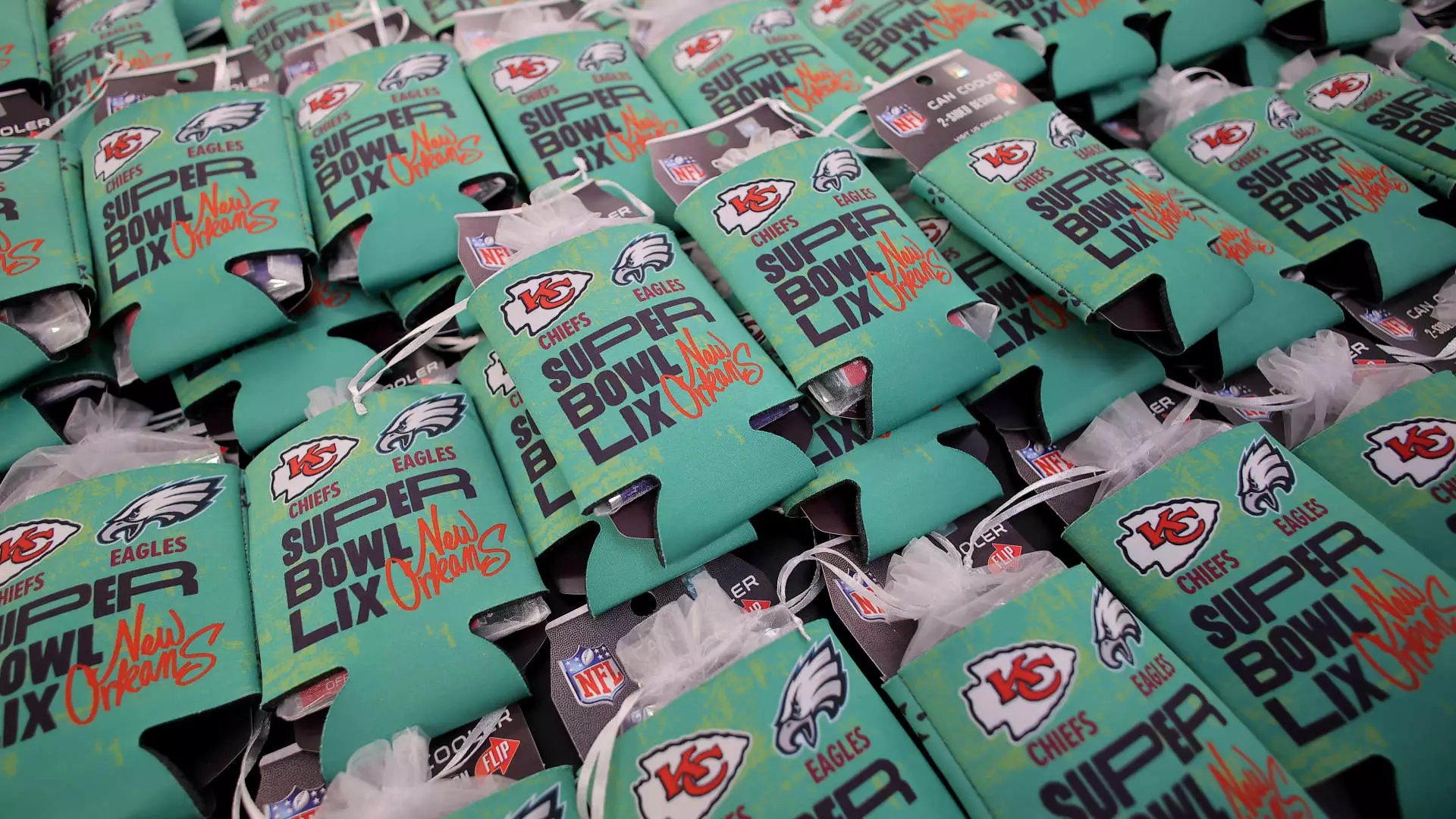The annual spectacle of the Super Bowl is not just a sporting event; it has become a focal point for advertisers, with costs reaching astronomical heights. This year, companies are reportedly spending up to $8 million for a brief 30-second slot during the championship showdown between the Philadelphia Eagles and the Kansas City Chiefs. Despite the hefty price tag, industry experts assert that these investments not only yield substantial returns but also present unparalleled opportunities for brand visibility and engagement. In an era defined by audience fragmentation across various platforms, the Super Bowl remains a rare jewel in advertisers’ crowns.
With the television landscape increasingly divided among numerous channels and streaming services, the Super Bowl stands out as one of the few instances where audiences unite in front of their screens. According to recent statistics, over 123 million viewers tuned in to last year’s game, a feat that no other program or event can boast of achieving in the same time frame. As Amy Leifer, DirecTV’s Chief Advertising Sales Officer, eloquently put it, where else can an advertiser reach over 100 million viewers simultaneously? This expansive reach is compelling for brands looking to launch products, boost brand awareness, or reengage with consumers.
Furthermore, the advertisement spending for the Super Bowl translates to an estimated $550 million, showcasing its undeniable effectiveness in generating substantial revenue. In fact, the Super Bowl’s potency is highlighted by research suggesting it can yield nearly three times the engagement compared to standard primetime programming. While traditional media faces challenges in adapting to a digital-first world, the Super Bowl provides a refreshing breath of life—an opportunity to captivate an audience that is not easily fragmented.
Continuing Relevance Amid Shifting Trends
In the face of increasing competition from digital platforms, the advertising landscape is in a constant state of flux. Despite the upward trend in spending on social media and digital ads, many advertising professionals still regard traditional television as the most effective method for connection. The Super Bowl exemplifies this, as its audience provides brands with an engaged viewer base that is not only large but also focused.
Moreover, data from EDO, an advertising analytics firm, reinforces the idea that Super Bowl advertising can deliver equivalent engagement to hundreds of regular primetime ads. Kevin Krim, CEO of EDO, noted that the strategic deployment of creative messaging during this high-profile event can lead to positive consumer interactions long after the ad has aired. This type of audience interaction is invaluable for brands, ensuring that their messaging resonates far beyond the fleeting moments of a 30-second spot.
Embracing Localized Strategies and Timing
While national advertisements garner much of the attention, localized campaigns can also experience significant boosts in performance during the Super Bowl. Companies like Zeam Media demonstrated that even smaller, hyper-targeted campaigns featuring celebrities can lead to millions of app downloads, emphasizing effectiveness at multiple audience levels. Jack Perry, Zeam’s CEO, noted that despite the cost of local spots, securing a place during such a massively-watched event is invaluable for brands looking to make a splash.
Notably, timing remains crucial for capitalizing on Super Bowl viewership. Andre Banks of NewWorld advises brands to align their ad placements with when their target audiences are most engaged. For example, while some viewers may tune in specifically for the halftime show, others may drop off once the act concludes. Recognizing these audience patterns can drastically affect the success of each individual advertisement.
A further layer added to this year’s event is the proliferation of social media, which has transformed the way viewers consume and engage with content during the Super Bowl. Many viewers find themselves tied to their phones, scrolling through social channels while they watch. This offers brands an opportunity for second-screen engagement, allowing for real-time interaction that can enhance brand visibility and consumer connection.
As brands delve into their advertising strategies, GroupM predicts an impressive rise in digital ad spending, with a notable $813.3 billion anticipated globally by 2025. This staggering figure ultimately clarifies that while traditional television continues to hold sway in event advertising, businesses must also be willing to adapt and embrace digital innovations side by side.
The Dilemma of Perceived Effectiveness
Despite the glaring advantages of Super Bowl advertising, some industry voices argue against the idea of traditional television as the pinnacle of effective advertising. Shoshana Winter of Converge captures this sentiment, suggesting that the Super Bowl’s strength lies not in its superiority but rather in its scarcity—few opportunities exist to engage a captive audience of this scale.
As advertisers weigh their options, the question of value versus effectiveness is pivotal. Acknowledging the shifting dynamics and adapting to incorporate digital strategies alongside traditional methods may be the key to future success in this ever-evolving advertising landscape.
The Super Bowl remains a tempestuous but lucrative battlefield where brands vie for consumer attention and engagement. As digital innovation reshapes advertising, the enduring appeal of the Super Bowl will likely continue to influence marketing strategies for years to come.

